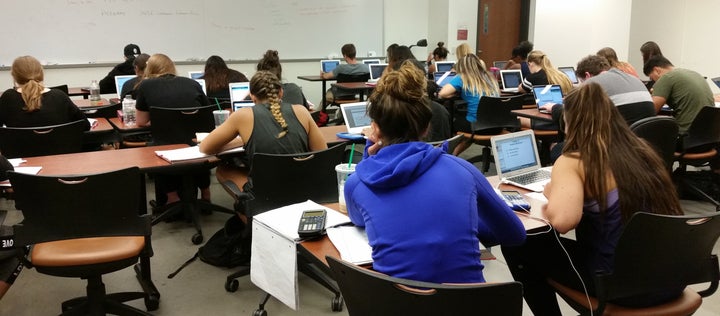
Most people are familiar with the concept that stereotyping may have negative effects, because it may lead to discrimination. But few know that stereotypes can harm every one of us, because they can affect how well we may perform when the stakes are highest.
Leave it to social psychologists to have a scientific term for it: Stereotype Threat -- the threat of being viewed through the lens of a negative stereotype, or the fear of doing something that would inadvertently confirm that stereotype.
How can stereotypes cause poor performance in ourselves?
In 1995, two Stanford psychologists published a landmark paper and coined the term Stereotype Threat to describe their findings. Claude Steele and Joshua Aronson conducted a study to explore why, on average, African American college students underperformed White American college students, even when similarly capable academically, based on admissions tests. They administered the same GRE test section to two groups of undergrad students (one Black, one White) who all had largely similar SAT scores.
When the groups were told that the exam did not test intellectual ability, but simply evaluated problem solving methods, African American students did as well as comparable White students. But when students were told that the exam tested ability, African American students did significantly worse -- compared to themselves (when told ability was not tested) -- and noticeably worse than White students. There was no similar difference between test results for White students.
A theory that affects everyone
Steele and Aronson theorized that when a person is part of a social group that has had a pervasive or historically associated negative stereotype linked to it, when faced with a test that may “confirm” the negative image, that person tends to perform poorer than what he or she may be truly capable of.
Because all of us belong to some social subset (elderly, youth, religious affiliation, gender, married, single, political orientation, speech or accent – the list is endless) that has some linked negative stereotype, Stereotype Threat can happen to anyone, given the right circumstances. Every one of us can be harmed by stereotyping, even if we’ve when experienced discrimination. Particularly the young.
Is Stereotype Threat actually real?
Since 1995 there have been over 300 studies testing the theory and mechanisms behind it. These studies have been broadened to include social status, gender, other racial and ethnic groups, and non-academic settings.

For instance, the Stereotype Threat effect has been seen in women’s performance on math tests when told males generally did better on the exam that was given the women, as compared to when told that there was no gender difference in results of the exam. Similarly, White males did worse on a math test when told that Asians did better on the test than Whites, as compared to when told there was no difference in test results between Asians and Whites.
Although less clear in studies involving real world observations and despite some evidence of publishing bias, experimental studies tend to support the theory.
What really is going on?
The actual mechanisms that seem to be at work that cause poor test or situational performance are at least threefold: 1) heightened stress; 2) performance monitoring, which causes over thinking and overuse of time; and 3) efforts to suppress negative thoughts/emotions, which narrows attention. Interestingly, Stereotype Threat appears to affect more committed and academically strong students greater than those less so.
What can be done?
Research indicates that people – especially students -- who believe that test results are a function of practice and not an innate trait (e.g. influenced by gender, social class, etc.) are less susceptible to Stereotype Threat. If a person believes that he or she has been well prepared and can improve his or her performance based on his or her own efforts, that person is more likely to overcome any negative stereotypes and perform up to his or her full potential.
Additionally, research suggests teaching students to think about a positive value, one that they cherish and strive toward, before taking a test can significantly mitigate Stereotype Threat.
The take away
The science is compelling — negative stereotyping potentially hurts everyone.
Each of is part of some group that has some negative stereotype attached to it. In situations where we become afraid of living up to that stereotype, we often do less well than we are truly able. This is particularly true of young people. Teaching ourselves and our children that success is effort driven, not innate, as well as instilling strong positive values on which we and they can focus can make all the difference.
Share this article via Facebook and Twitter.
Joel L. A. Peterson is the national award-winning author of the novel, Dreams of My Mothers (Huff Publishing Associates, 2015).
-- 1st Place Winner, 2015 Readers' Favorite National Book Awards (Gold Award)
-- Book of the Year Award Winner, Foreword Reviews’ 2015 INDIEFAB Awards
“Compelling, candid, exceptionally well written, Dreams of My Mothers is a powerful read. Very highly recommended.”
— Midwest Book Review
Learn more about the author and his book at Dreamsofmymothers.com and on Facebook
